1.
Introduction and preliminaries
A mapping $ f:U \to V $ is called additive if $ f $ satisfies the Cauchy functional equation
for all $ x, y \in U $. It is easy to see that the additive function $ f(x) = a x $ is a solution of the functional equation (1.1) and every solution of the functional equation (1.1) is said to be an additive mapping. A mapping $ f:U \to V $ is called quadratic if $ f $ satisfies the quadratic functional equation
for all $ x, y \in U $. A mapping $ f:U \to V $ is quadratic if and only if there exist a symmetric biadditive mapping $ B:U^2 \to V $ such that $ f(x) = B(x, x) $ and this $ B $ is unique, refer (see [1,10]). It is easy to see that the quadratic function $ f(x) = a x^2 $ is a solution of the functional equation (1.2) and every solution of the functional equation (1.2) is said to be a quadratic mapping.
Mixed type functional equation is an advanced development in the field of functional equations. A single functional equation has more than one nature is known as mixed type functional equation. Further, in the development of mixed type functional equations, atmost only few functional equations have been obtained by many researchers (see [3,6,9,11,12,16,17,22,24]).
Let $ G $ be a group and $ H $ be a metric group with a metric $ d(., .) $. Given $ \epsilon > 0 $ does there exists a $ \delta > 0 $ such that if a function $ f:G \rightarrow H $ satisfies $ d(f(xy), f(x)f(y)) < \delta $ for all $ x, y \in G $, then is there exist a homomorphism $ a: G \rightarrow H $ with $ d(f(x), a(x)) < \epsilon $ for all $ x\in G $? This problem for the stability of functional equations was raised by Ulam [23] and answerd by Hyers [7]. Later, it was developed by Rassias [20], Rassias [18,21] and G${\rm{\mathord{\buildrel{\lower3pt\hbox{$\scriptscriptstyle\smile$}} \over v} }}$uruta [5].
The probabilistic modular space was introduced by Nourouzi [14] in 2007. Later, it was developed by K. Nourouzi [4,15].
Definition 1.1. Let $ V $ be a real vector space. If $ \mu:V\to \Delta $ fulfills the following conditions
(ⅰ) $ \mu(v)(0) = 0 $,
(ⅱ) $ \mu(v)(t) = 1 $ for all $ t > 0 $, if and only if $ v = \gamma $ ($ \gamma $ is the null vector in $ V $),
(ⅲ) $ \mu(-v)(t) = \mu(v)(t) $,
(ⅳ) $ \mu(a u+b v)(r+t)\geq\mu(v)(r)\wedge\mu(v)(t) $
for all $ u, v\in V $, $ a, b, r, t\in \mathbb{R^{+}} $, $ a+b = 1 $, then a pair $ (V, \mu) $ is called a probabilistic modular space and $ (V, \mu) $ is $ b $-homogeneous if $ \rho(a v)(t) = \mu(v)(\frac{t}{|a|^b}) $ for all $ v\in V, t > 0 $, $ a\in \mathbb{R} \backslash \{0\} $. Here $ \Delta $ is $ g:\mathbb{R} \to \mathbb{R^+} $ the set of all nondecreasing functions with $ \inf_{t\in\mathbb{R}}g(t) = 0 $ and $ \sup_{t\in\mathbb{R}}g(t) = 1 $. Also, the function $ \min $ is denoted by $ \wedge $.
Example 1.2. Let $ V $ be a real vector space and $ \mu $ be a modular on $ X $. Then a pair $ (V, \mu) $ is a probabilistic modular space, where
In 2002, Rassias [19] studied the Ulam stability of a mixed-type functional equation
Later, Nakmalachalasint [13] generalized the above functional equation and obtained an $ n $-variable mixed-type functional equation of the form
for $ n > 2 $ and investigated its Ulam stability.
In 2005, Jun and Kim [8] introduced a generalized $ AQ $-functional equation of the form
for $ a\neq 0, \pm 1 $.
In 2013, Zolfaghari et al. [25] investigated the Ulam stability of a mixed type functional equation in probabilistic modular spaces. In the same year, Cho et al. [2] introduced a fixed point method to prove the Ulam stability of $ AQC $-functional equations in $ \beta $-homogeneous probabilistic modular spaces.
Motivated from the notion of probabilistic modular spaces and by the mixed type functional equations, we introduce a new mixed type functional equation satisfied by the solution $ f(x) = x+x^2 $ of the form
for $ n\in \mathbb{N} $ and investigate its Ulam stability in probabilistic modular spaces.
This paper is organized as follows: In Section 1, we provide a necessary introduction of this paper. In Sections 2 and 3, we obtain the general solution of the functional equation (1.3) in even case and in odd case, respectively. In Sections 4 and 5, we investigate the Ulam stability of (1.3) in probabilistic modular space by using fixed point theory for even and odd cases, respectively and the conclusion is given in Section 6.
2.
General solution of a mixed type functional equation for even case
Let $ U $ and $ V $ be real vector spaces. In this section, we obtain the general solution of a mixed type functional equation (1.3) for even case of the form
for $ n \in \mathbb{N} $.
Theorem 2.1. Let $ f:U \to V $ satisfy the functional equation (2.1). If $ f $ is an even mapping, then $ f $ is quadratic.
Proof. Assume that $ f: U \to V $ is even and satisfies the functional equation (2.1). Replacing $ (x_1, x_2, \dots, x_n) $ by $ (0, 0, \dots, 0) $ and by $ (x_1, 0, \dots, 0) $ in (2.1), we obtain $ f(0) = 0 $ and
for all $ x_1 \in U $, respectively. Again, replacing $ (x_1, x_2, x_3, \dots, x_n) $ by $ (x_1, x_1, 0, \dots, 0) $ in (2.1), we have
for all $ x_1 \in U $. Now, from (2.2) and (2.3), we get
for all $ x_1 \in U $. Replacing $ (x_1, x_2, x_3, x_4, \dots, x_n) $ by $ (x_1, x_2, x_2, 0, \dots, 0) $ in (2.1), we obtain
for all $ x_1, x_2 \in U $. Replacing $ (x_1, x_2, x_3, x_4, \dots, x_n) $ by $ (x_1, x_2, 0, 0, \dots, 0) $ in (2.1), we get
for all $ x_1, x_2 \in U $. Replacing $ x_2 $ by $ -x_2 $ in (2.5), using the evenness of $ f $ and again adding the resultant to (2.5), we get
for all $ x_1, x_2 \in U $. Replacing $ (x_1, x_2) $ by $ (x_1+x_2, x_1-x_2) $ in (2.6), we get
for all $ x_1, x_2 \in U $. Letting $ (x_1, x_2) $ by $ (x_1, x_1+x_2) $ in (2.5), we get
for all $ x_1, x_2 \in U $. Replacing $ x_1 $ by $ x_2 $ and $ x_2 $ by $ x_1 $ in (2.8), we have
for all $ x_1, x_2 \in U $. Now, adding (2.8) and (2.9), we obtain
for all $ x_1, x_2 \in U $. Using (2.4), (2.7) and (2.10), we obtain (1.2). Hence the mapping $ f $ is quadratic.
3.
General solution of a mixed type functional equation for odd case
Let $ U $ and $ V $ be real vector spaces. In this section, we obtain the general solution of a mixed type functional equation (1.3) for even case of the form
for $ n \in \mathbb{N} $.
Theorem 3.1. Let $ f:U \to V $ satisfy the functional equation (3.1). If $ f $ is an odd mapping, then $ f $ is additive.
Proof. Assume that $ f $ is odd and satisfies the functional equation (3.1). Replacing $ (x_1, x_2, \dots, x_n) $ by $ (0, 0, \dots, 0) $ and $ (x_1, 0, \dots, 0) $ in (3.1), we obtain $ f(0) = 0 $ and
for all $ x_1 \in U $, respectively. Again, replacing $ (x_1, x_2, x_3, \dots, x_n) $ by $ (x_1, x_1, 0, \dots, 0) $ in (3.1), we have
for all $ x_1 \in U $. Now, from (3.2) and (3.3), we get
for all $ x_1 \in U $. Replacing $ (x_1, x_2, x_3, x_4, \dots, x_n) $ by $ (x_1, x_2, 0, 0, \cdots, 0) $ in (3.1), we get
for all $ x_1, x_2 \in U $. Replacing $ x_2 $ by $ -x_2 $ in (3.4), using the oddness of $ g $ and again adding the resultant to (3.4), we get
for all $ x_1, x_2 \in U $. Replacing $ (x_1, x_2) $ by $ (x_1+x_2, x_1-x_2) $ in (3.5), we get
for all $ x_1, x_2 \in U $. Replacing $ x_1 $ by $ x_2 $ and $ x_2 $ by $ x_1 $ in (3.4), we have
for all $ x_1, x_2 \in U $. Replacing $ (x_1, x_2) $ by $ (x_1, x_1+x_2) $ in (3.4), we get
for all $ x_1, x_2 \in U $. Replacing $ x_1 $ by $ x_2 $ and $ x_2 $ by $ x_1 $ in (3.8) and adding the resultant equation to (3.8), we obtain
for all $ x_1, x_2 \in U $. Using (3.6), (3.7) and (3.9), we obtain (1.1). Hence the mapping $ f $ is additive.
4.
Stability of a mixed type functional equation for even case
In this section, we prove the Ulam stability of the $ n $-variablel mixed type functional equation (1.3) for even case in probabilistic modular spaces (PM-spaces) by using fixed point technique.
For a mapping $ f: M \to (V, \mu) $, consider
for $ n\in \mathbb{N} $.
Theorem 4.1. Let $ M $ be a linear space and $ (V, \mu) $ be a $ \mu $-complete $ b $-homogeneous $ PM $-space. Suppose that a mapping $ f: M \to (V, \mu) $ satisfies an inequality
for all $ x_1, x_2, \dots, x_n \in M $ and a given mapping $ \rho: M \times M \to \Delta $ such that
for all $ x\in M $ and
for all $ x_1, x_2, \dots, x_n\in M $ and a constant $ 0 < N < \frac{1}{2^b}. $ Then there exists a unique quadratic mapping $ T:M\to (V, \mu) $ satisfying (2.1) and
for all $ x \in M $.
Proof. Replacing $ (x_1, x_2, \dots, x_n) $ by $ (x, 0, \dots, 0) $ in (4.1), we obtain
for all $ x \in M $. This implies
for all $ x \in M $. Replacing $ x $ by $ 2^{-1}x $ in (4.6), we obtain
From (4.6) and (4.7), we obtain
for all $ x\in M $.
Consider $ P: = \{f:M\to(U, \mu)|f(0) = 0\} $ and define $ \eta $ on $ P $ as follows:
It is simple to prove that $ \eta $ is modular on $ N $ and indulges the $ \Delta_2 $-condition with $ 2^b = \kappa $ and Fatou property. Also, $ N $ is $ \eta $-complete (see [25]). Consider the mapping $ Q: P_\eta \to P_\eta $ defined by $ QT(x): = \frac{T(2^a x)}{2^{2a}} $ for all $ T\in P_\eta $.
Let $ f, j \in P_\eta $ and $ l > 0 $ be an arbitrary constant with $ \eta(f-j)\leq l. $ From the definition of $ \eta $, we get
for all $ x \in M $. This implies
for all $ x \in M $. Hence $ \eta(Qf-Qj)\leq N \eta(f-j) $ for all $ f, j\in P_\eta $, which means that $ Q $ is an $ \eta $-strict contraction. Replacing $ x $ by $ 2^a x $ in (4.8), we have
for all $ x\in M $ and therefore
for all $ x \in E $. Now
for all $ x \in M $. In (4.11), replacing $ x $ by $ 2^a x $ and $ 2^b (Nt+t) $ by $ 2^{2\beta a} 2^b(N^2 t+Nt) $, we obtain
for all $ x \in M $. Therefore,
for all $ x \in M $. This implies
for all $ x\in M $. Generalizing the above inequality, we get
for all $ x\in M $ and a positive integer $ m $. Hence we have
Now, one can easily prove that $ \{Q^m(f)\} $ is $ \eta- $converges to $ T\in P_\eta $ (see [25]). Thus (4.16) becomes
which implies
for all $ x\in M $ and hence we have
for all $ x\in M $ and hence the inequality (4.4) holds. One can easily prove the uniqueness of $ T $ (see [25]).
5.
Stability of a mixed type functional equation for odd case
In this section, we prove the Ulam stability of the $ n $-variable mixed type functional equation (1.3) for odd case in probabilistic modular spaces (PM-spaces) by using fixed point technique.
For a mapping $ f: M \to (U, \mu) $, consider
for $ n\in \mathbb{N} $.
Theorem 5.1. Let $ M $ be a linear space and $ (V, \mu) $ be a $ \mu $-complete $ b $-homogeneous $ PM $-space. Suppose that a mapping $ f: M \to (V, \mu) $ satisfies an inequality
for all $ x_1, x_2, \dots, x_n \in M $ and a given mapping $ \rho: M \times M \to \Delta $ such that
for all $ x\in M $ and
for all $ x_1, x_2, \dots, x_n\in M $ and a constant $ 0 < N < \frac{1}{2^b}. $ Then there exists a unique additive mapping $ A:M\to (V, \mu) $ satisfying (3.1) and
for all $ x \in M $.
Proof. Replacing $ (x_1, x_2, \dots, x_n) $ by $ (x, 0, \dots, 0) $ in (5.1), we obtain
for all $ x \in M $. This implies
for all $ x \in M $. Replacing $ x $ by $ 2^{-1}x $ in (5.6), we obtain
From (5.6) and (5.7), we obtain
for all $ x\in M $.
Consider $ P: = \{f:M\to(U, \mu)|f(0) = 0\} $ and define $ \eta $ on $ P $ as follows:
It is simple to prove that $ \eta $ is modular on $ N $ and indulges the $ \Delta_2 $-condition with $ 2^b = \kappa $ and Fatou property. Also, $ N $ is $ \eta $-complete (see [25]). Consider a mapping $ Q: P_\eta \to P_\eta $ defined by $ QA(x): = \frac{A(2^a x)}{2^{a}} $ for all $ A\in P_\eta $.
Let $ f, j \in P_\eta $ and $ l > 0 $ be an arbitrary constant with $ \eta(f-j)\leq l. $ From the definition of $ \eta $, we get
for all $ x \in M $. This implies
for all $ x \in M $. Hence $ \eta(Qf-Qj)\leq N \eta(f-j) $ for all $ f, j\in P_\eta $, which means that $ Q $ is an $ \eta $-strict contraction. Replacing $ x $ by $ 2^a x $ in (5.8), we get
for all $ x\in M $ and thus
for all $ x \in E $. Now
for all $ x \in M $. In (5.11), replacing $ x $ by $ 2^a x $ and $ 2^b (Nt+t) $ by $ 2^{b a} 2^b(N^2 t+Nt) $, we obtain
for all $ x \in M $. Therefore,
for all $ x \in M $. This implies
for all $ x\in M $. Generalizing the above inequality, we have
for all $ x\in M $ and a positive integer $ m $. Hence we have
Now, one can easily prove that $ \{Q^m(f)\} $ is $ \eta $-convergent to $ A\in P_\eta $ (see [25]). Thus (4.16) becomes
which leads
for all $ x\in M $ and hence we have
for all $ x\in M $ and hence the inequality (5.4) holds. One can easily prove the uniqueness of $ A $ (see [25]).
6.
Conclusion
In this paper, we introduced a new $ n $-variable mixed type functional equation satisfied by the solution $ f(x) = ax+ bx^2 $. Mainly, we obtained its general solution and investigated its Ulam stability in $ PM $-spaces by using fixed point theory and we hope that this research work is a further improvement in the field of functional equations.
Acknowledgments
This work was supported by Incheon National University Research Grant 2020-2021.
Conflict of interest
The authors equally conceived of the study, participated in its design and coordination, drafted the manuscript, participated in the sequence alignment, and read and approved the final manuscript.
The authors declare that they have no competing interests.











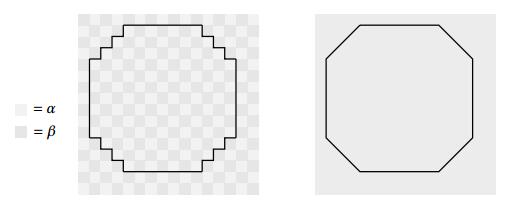


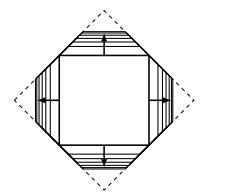
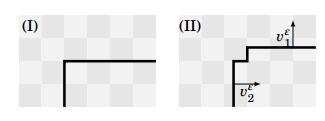
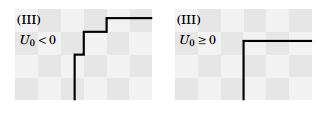
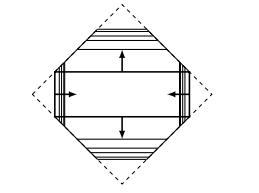


 DownLoad:
DownLoad: